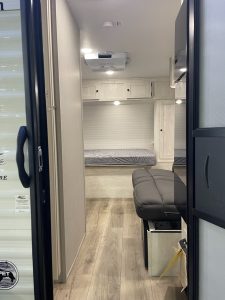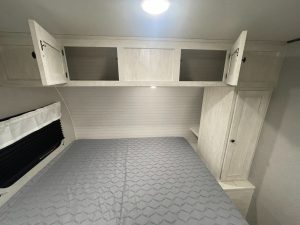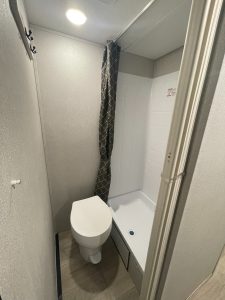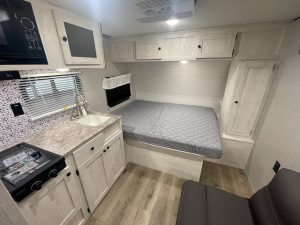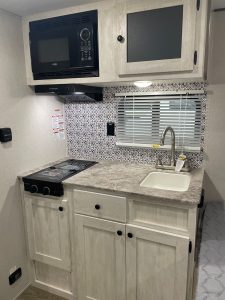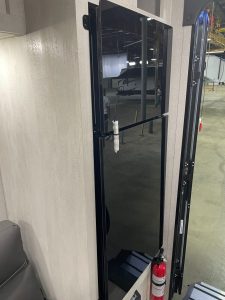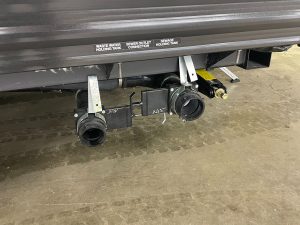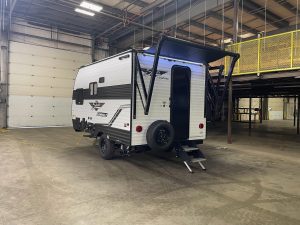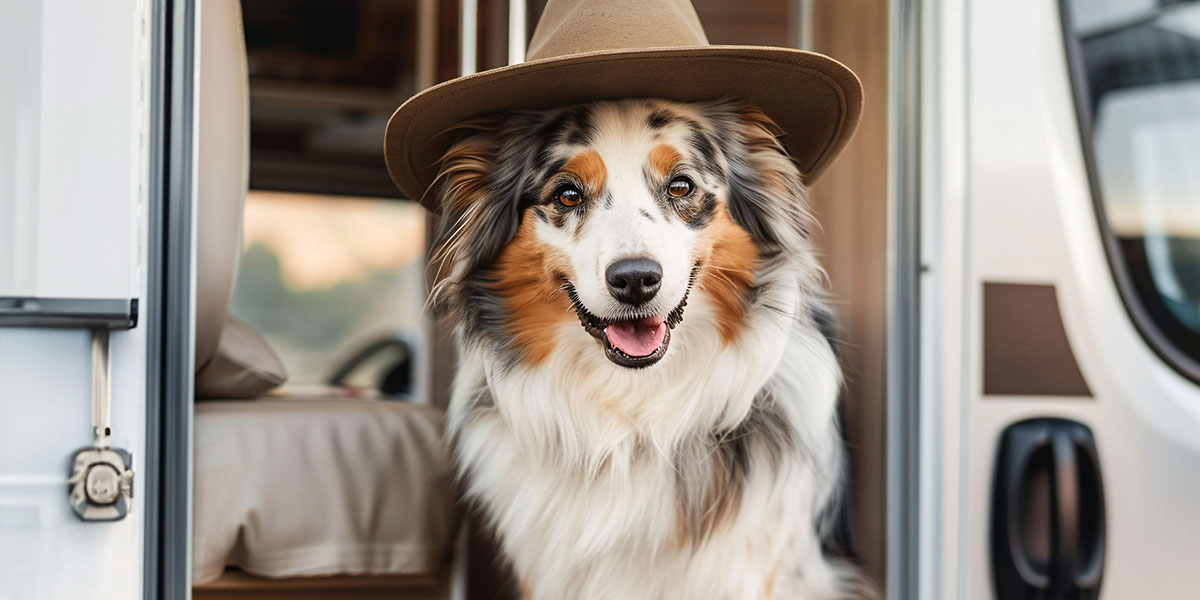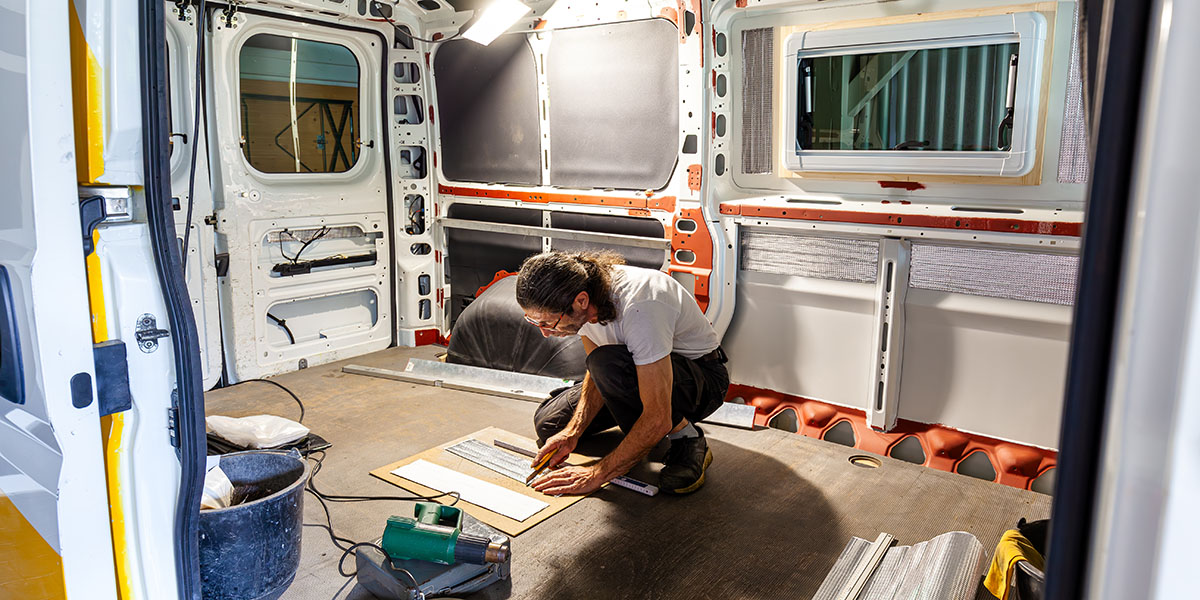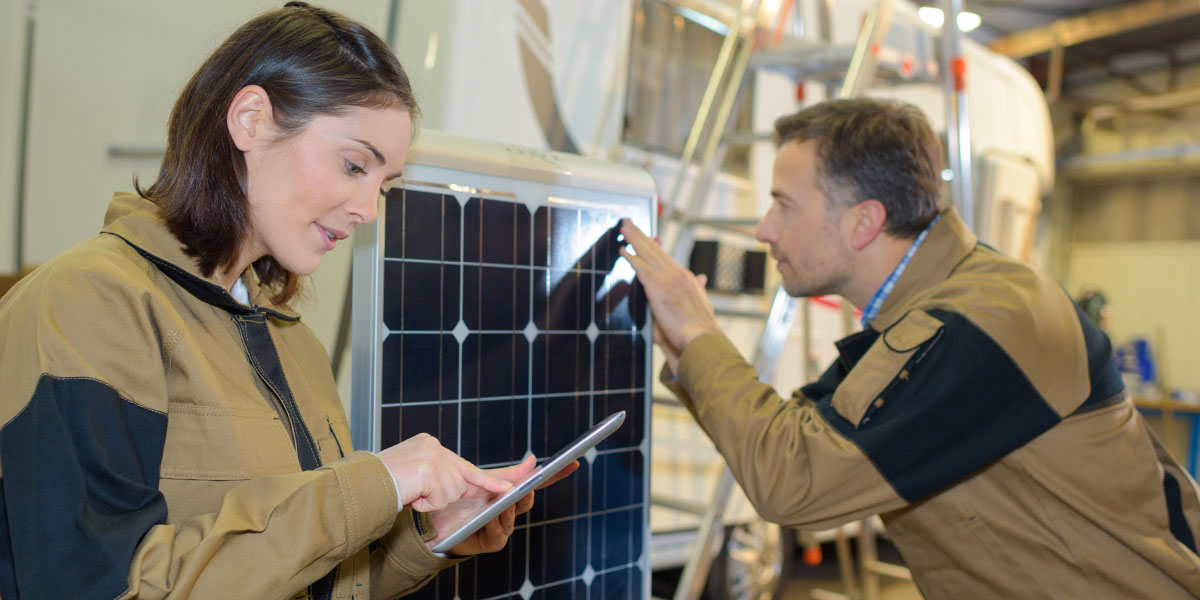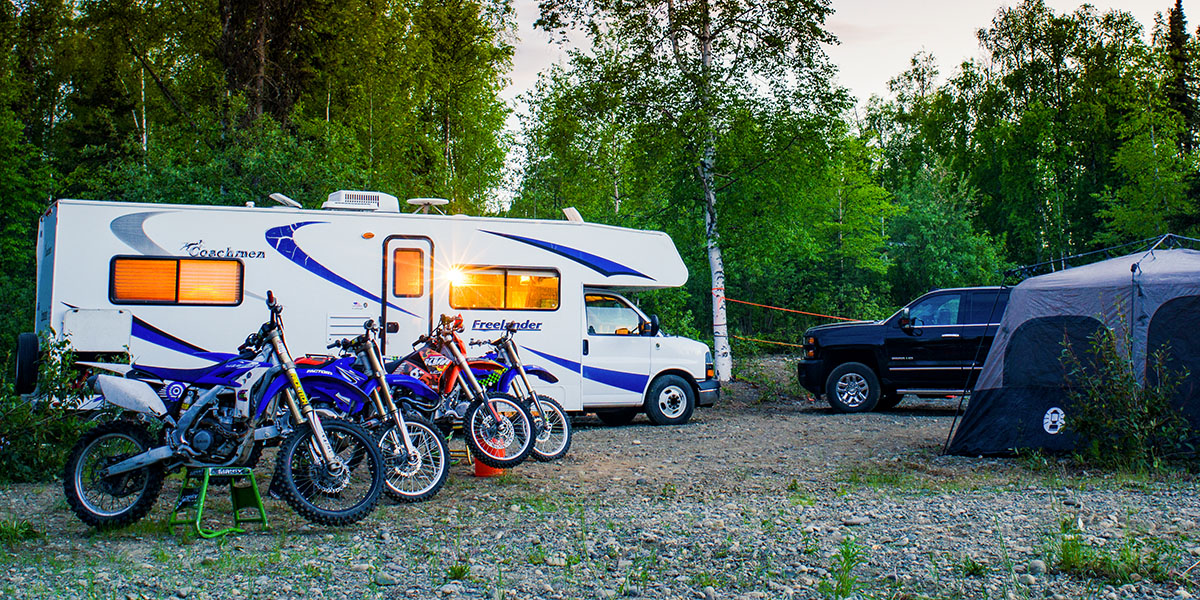Today’s RV review is of the Forest River Vengeance Rogue Armored 4007G2 toy hauler with the Folds of Honor (FOH) package. But first (indulge me), I just gotta say this: Is it just me, or do toy haulers really seem to go all-in on hardcore names? Vengeance. Sandstorm. Shockwave. These super serious names carry a lot of frowny-face emotions. Which is ironic, because I have seen a lot of these awesome RVs towed by people who then launch out with their nifty toys and go exploring. It’s an adrenaline-fueled adventure where everyone smiles — with a vengeance.
All kidding aside, the Vengeance Rogue Armored 4007G2 is a huge fifth wheel toy hauler that features a garage area that’s closed-off from the rest of the trailer — a feature that’s a particularly good thing if you’re carrying stinky machines (very likely) and don’t want your rig to smell like gasoline alley (also very likely).
The model I saw was part of a special edition that supports an organization called Folds of Honor which provides scholarships to families of America’s fallen, disabled military members, and first responders. As such, this Vengeance Rogue Armored 4007G2 was emblazoned with a lot of patriotic decor.
At a Glance: Vengeance Rogue Armored 4007G2
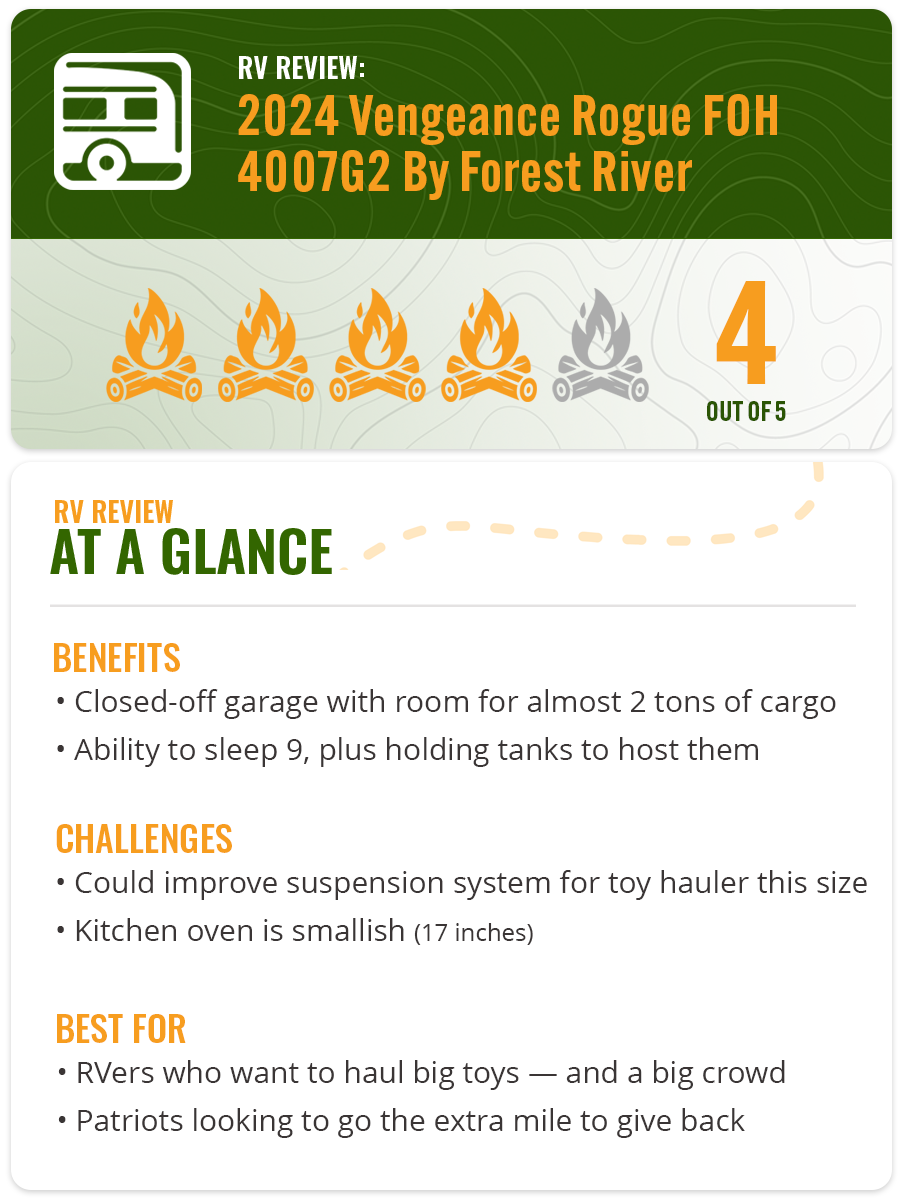 I gave the Vengeance Rogue Armored 4007G2 four out of five stars. From the standpoint of hauling toys and accommodating a good number of people for sleeping and eating, this rig does a very good job. But the corners cut with the small oven and budget-focused suspension are real drawback (to me) for an RV in this price range.
I gave the Vengeance Rogue Armored 4007G2 four out of five stars. From the standpoint of hauling toys and accommodating a good number of people for sleeping and eating, this rig does a very good job. But the corners cut with the small oven and budget-focused suspension are real drawback (to me) for an RV in this price range.
Check the Specs
- Sleeping capacity: 9
- Hitch weight: 3,100 pounds
- UVW: 13,174 pounds
- CCC: 3,926 pounds.
- Exterior length: 45 feet 6 inches
- Exterior height 13 feet 4 inches
- Exterior width: 8 feet 6 inches
- Fresh/Gray/Black: 150/80/80 gallons
- Awnings: 12 feet and 18 feet
Benefits
- Closed-off garage area for almost 2 tons of cargo
- Ability to sleep 9, plus holding tanks to host them
Challenges
- Suspension system could improve for toy hauler this size
- Kitchen oven is smallish (17 inches)
Best For
- RVers who want to bring big toys — and a big crowd to play with them
- Patriots looking to go the extra mile to give back to the people who have served our country with honor
The RV Trader Process
RV Trader asked RV shoppers what was most important to them in their RV buying process. Potential buyers — like you — helped us to identify a list of six key areas that camping and travel enthusiasts always look at when they’re searching for the perfect RV: sleeping space, bathroom, living area, four-season capabilities, and storage space.
The RV Trader team then got to work providing you with an honest and unbiased evaluations. And that’s where I come in. I’m Tony Barthel, RV expert and enthusiast. I provide an honest look at RVs from RV industry insider perspective. That way, you can learn the good, the bad, and the intriguing about any RVs I review. I inspect each RV with the buyer’s perspective at the forefront. And I always evaluate those six key areas that buyers have told us that they have in mind.
So, that said, let’s take a closer look at the 2024 Forest River Vengeance Rogue Armored 4007G2 FOH.
Sleeping Space
The master bedroom is located in the upper deck of this toy hauler. And it’s quite spacious. I’m a bigger guy, but I had no issues walking around. The king-size bed in this rig has an adjustability feature to it which is also nice. Do note: It’s not a full king but is an “RV king.” For those who aren’t familiar with the difference, that means that it’s eight inches narrower. But an additional feature that it have is a power lift mechanism so you can raise the head of the bed. From the bedroom, you can also walk right into the master bathroom.
In the garage, there’s two flip-up sofas, a raised queen-size bed, and a loft. Together, with the additional sleeping space on the couch in the living area, these spaces mean you could very well have room for eight to nine guests. The couches on the walls of this rig fold flat against the walls, again, to accommodate larger toys such as a side-by-side. The bed that’s over the couches is held in place with four gas struts which is a method I really like. To drop the bed into position just pull the back and then the front down onto the supports. To lift it back up for cargo carrying just push it back into stowed position. This mechanism is simple and effective and fast.
Bathroom
There are two bathrooms in this RV. The first is on the upper deck has a bathroom, and, as mentioned, has doors to the bedroom and to the hallway. Inside, there is plenty of space to change clothes plus a decent amount of storage in several cupboards. The shower is a corner unit with a nicer shower head.
There’s also a second bathroom downstairs in the cargo area. Which makes a lot of sense. If you have a crew sleeping in what is otherwise the cargo area, it gives them access to a bathroom of their own. Or, equally likely, if you come in off the road and are dusty and dirty, this is the place to go before the boss lets you into the main living space.
This second bathroom can be created with folding walls and a folding upper berth that’s also the bathroom’s ceiling. When you want to bring in larger toys this bathroom’s walls fold away to accommodate them. When it’s time to camp, just fold out the walls and drop down the upper berth and now you have a fully enclosed bathroom with a porcelain foot flush toilet and small corner sink.
Living Area
Speaking of the main living space, the Vengeance Rogue Armored 4007G2 has an unusual setup. There’s a theater seat/couch over on the road side, which that shares a slide room with the large 16-cubic-foot, 12-volt refrigerator. The couch features heat and massage for the outboard positions, but all three seats can recline.
There is also sort of half a dinette on the camp side with a permanently mounted table and a bench. If you bring in a couple of camp chairs. you could now have seats that face one another if you like. This bench faces an electric fireplace and the kitchen.
As with other large fifth wheels, this one features plenty of cabinets and drawers including upper cabinets that might require some campers to have to use a step ladder to reach things near the top.
Kitchen
The kitchen has a decent amount of counter space. You also get a three-burner propane stove top with a small 17-inch (vertical) RV oven. They are of the things that I universally dislike. I’ve found that these smaller ovens just have such hot spots and have limited space, so for a rig this pricey designed to serve so many people the larger 22-inch (vertical) oven would have been a much more logical choice. None are available in this model, unfortunately. However, this is nicely counterbalanced by there being a residential-sized convection microwave.
As previously mentioned, across from the galley, there is the large 16-cubic-foot 12-volt refrigerator. Facing it, just to its left is a walk-in pantry — always a nice surprise.
Four-Season Capabilities
These big toy haulers have huge holding tanks and that makes them great for off-grid camping. As for cold weather camping, there are 12-volt heating pads on the holding tanks, which are in an enclosed underbelly. But, even so, the gate valves for the tanks are fully exposed. So, I would be cognizant of this when camping in colder temperatures. Especially if you’re off-grid.
Speaking of going off-grid, more and more RV companies are recognizing the advances in solar and battery storage systems. This trailer comes with 100 watts of solar with an additional 100 watts as an option. I doubt that even the 200 watts of solar would do a satisfactory job of maintaining the state of charge of the batteries with this large refrigerator. However, there is a package with 300 watts of solar and a 2,000-watt inverter, which gives you more muscle. And, of course, a 5,500-watt generator is also available as an option.
Storage Space
The garage of this rig is 14 feet long and capable of hauling almost two tons of cargo, with 5,000-pound tie-down hooks mounted directly to the chassis. There’s also an optional camera where you can see what’s going on in the garage from inside the tow vehicle. (You know, in case you want to monitor those toys you’re towing along after you hit a pothole.)
The Vengeance Rogue Armored line of toy haulers feature a Z-frame construction. Essentially, that gives you a sizable front passthrough storage compartment that extends into the very front of the trailer and sports cargo tie-downs in the front.
There are also two compartments below the main compartment deck in the front. On the camp side is a very large battery compartment. You can fill this with half a dozen batteries — no problem.
On the road side is a gasoline-fueled 5,500-watt inverter generator which draws its fuel from the 3-gallon, onboard fuel tank. You can also utilize this to fuel-up gas-powered toys as well so you’re literally bringing your own gas station with you.
Closing Notes on the Vengeance Rogue Armored 4007G2
Ramptastic Features
There’s a very long/tall ramp at the back of this rig which can be dropped down to do double duty as a patio deck. Which is one of the things I really like about toy haulers. With the height of this rig, the ramp door is longer/taller, so there is a lower angle for loading up your toys. But also, the opening is taller so golf carts or side-by-sides can fit through the opening as well.
There’s also a screened fence around the perimeter of the ramp door when it’s in patio position. You can also opt in a glass door to cover the opening which is nice. That means the ramp door can be in patio mode but there is a glass door to keep out the flying nuisances and also keep your heat or cool in.
Folds of Honor Special Edition Package
For the 2024 model year, the Vengeance Rogue and Rogue Armored lines of travel trailers, fifth wheels, and toy haulers offers the Folds of Honor Special Edition. Folds of Honor is a national organization that provides scholarships to families of America’s fallen or disabled military and first responders. Since 2007, Folds of Honor has awarded abut 44,000 scholarships, an impact of nearly $200 million.
For each Special Edition that is sold, Forest River donates $1,000 to Folds of Honor in the customer’s name. In turn, Folds of Honor will supply a placard with the name and description of a fallen or disabled military and first responder to the owner to proudly display on their coach.
Among other things, the optional package features Folds of Honor graphics on the exterior and a number of accessories. That includes patriotic bedding, linen, and signage that carry the theme through on the inside.
A Pure Mission
The partnership came about when sales manager Bradley Short came across Folds of Honor and was struck by their mission.
“It hit me like a brick,” he said, “so I looked into it a little deeper. Look, there’s a bunch of charities out there that are doing a bunch of good work. But the thing that got me about Folds of Honor was the fact that 91 cents out of every dollar goes to the intended recipient. Their message and their mission is pure. And it’s something that I could really get behind.
“So, I went to them and said, ‘Would you be interested in partnering with our division on building a coach?’ ” Short shared. Three days later, the agreement was in place and the Folds of Honor Special Edition package for the Vengeance Rogue brand was launched.
“We were able to get this done in such a short amount of time because it’s pure,” Short explained. “We absolutely support what these guys are doing, and we want to help them through building our RVs, and we want people to look at this and know that they’re making a difference in the family members’ lives of a wounded or fallen service member.”
Thoughts on Suspension, Service, and Shades
With as much as this rig can haul, I would also like to see a better suspension than simple leaf springs on dry bolts. Things like a MorRyde CRE4000 would offer better dampening so there is less vibration transmitted into the trailer which is better for the trailer. There are several brands of better suspensions out there.
As someone who has helped to raise money for a charity called Operation Tango Mike which sends care packages to in-service military personnel, I can appreciate the patriotic references here. To my eye they’re tasteful and well done.
Interestingly this one has those zebra shades, and I like them but not everybody does. I’m curious about your take on those and this whole patriotic them. (Does this idea resonate with you?) Overall, the Forest River Vengeance Rogue Armored 4007G2 that I saw had a number of good features. That particularly includes the power folding king-sized bed and the way the bathroom walls in the cargo bay can be folded away for larger hauling capability. That hauling capacity, of course, a dominant feature of measurement for any toy hauler.
Make Your Move
Start shopping for the year, make, and model. Find Your Vengeance Rogue Armored 4007G2
What Other Campers Are Saying
Read the best reviews by owners. Search for an RV Model
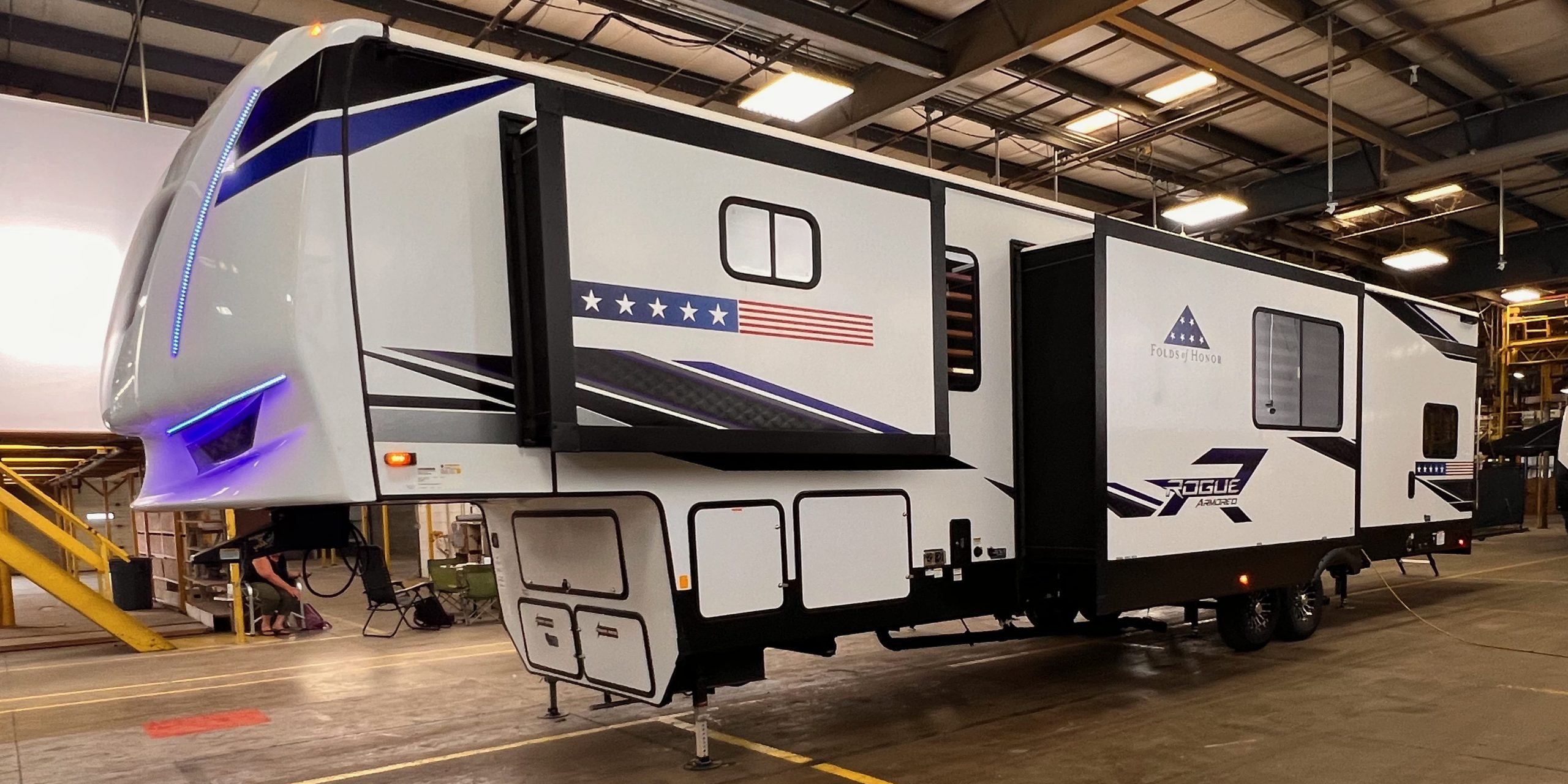
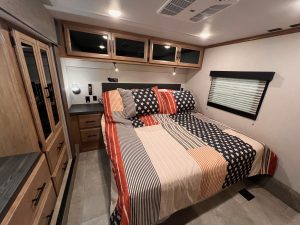
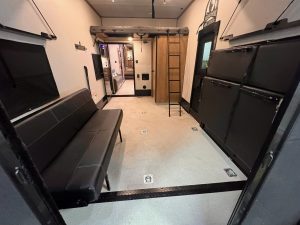
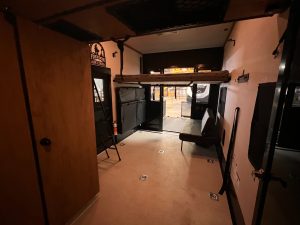
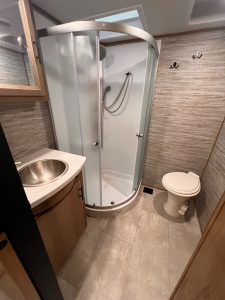
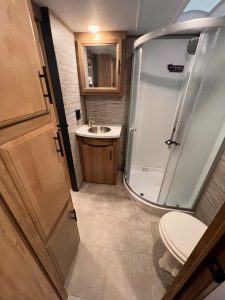
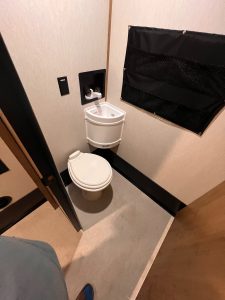
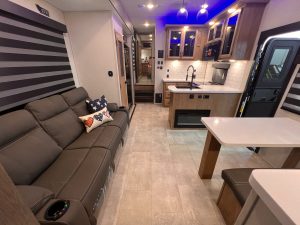
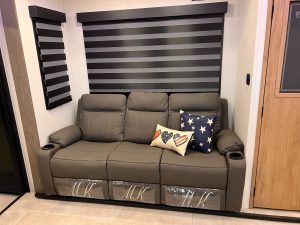
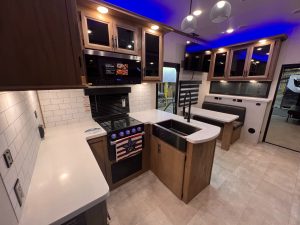
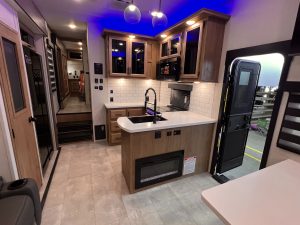
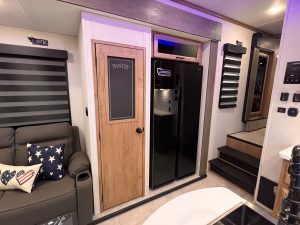
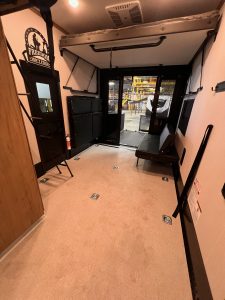
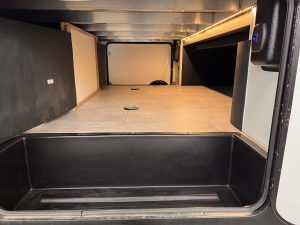
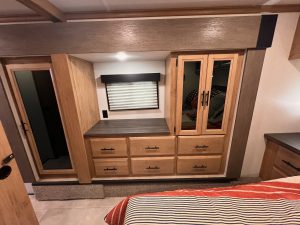
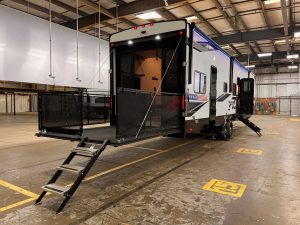
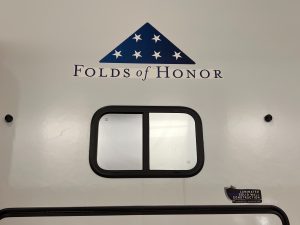
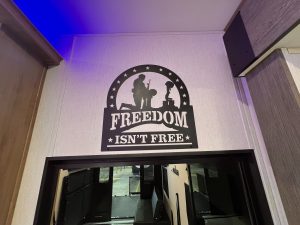
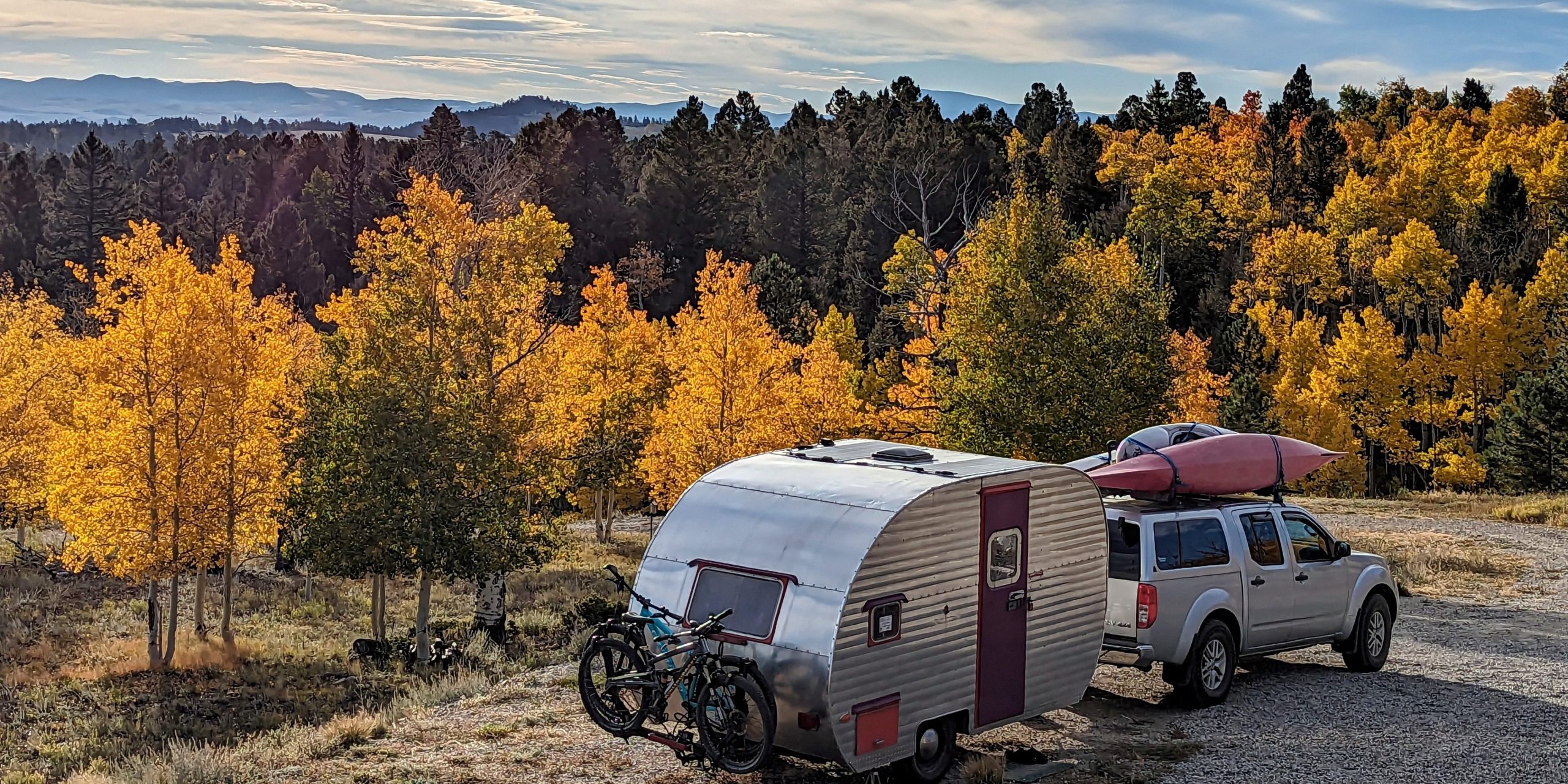
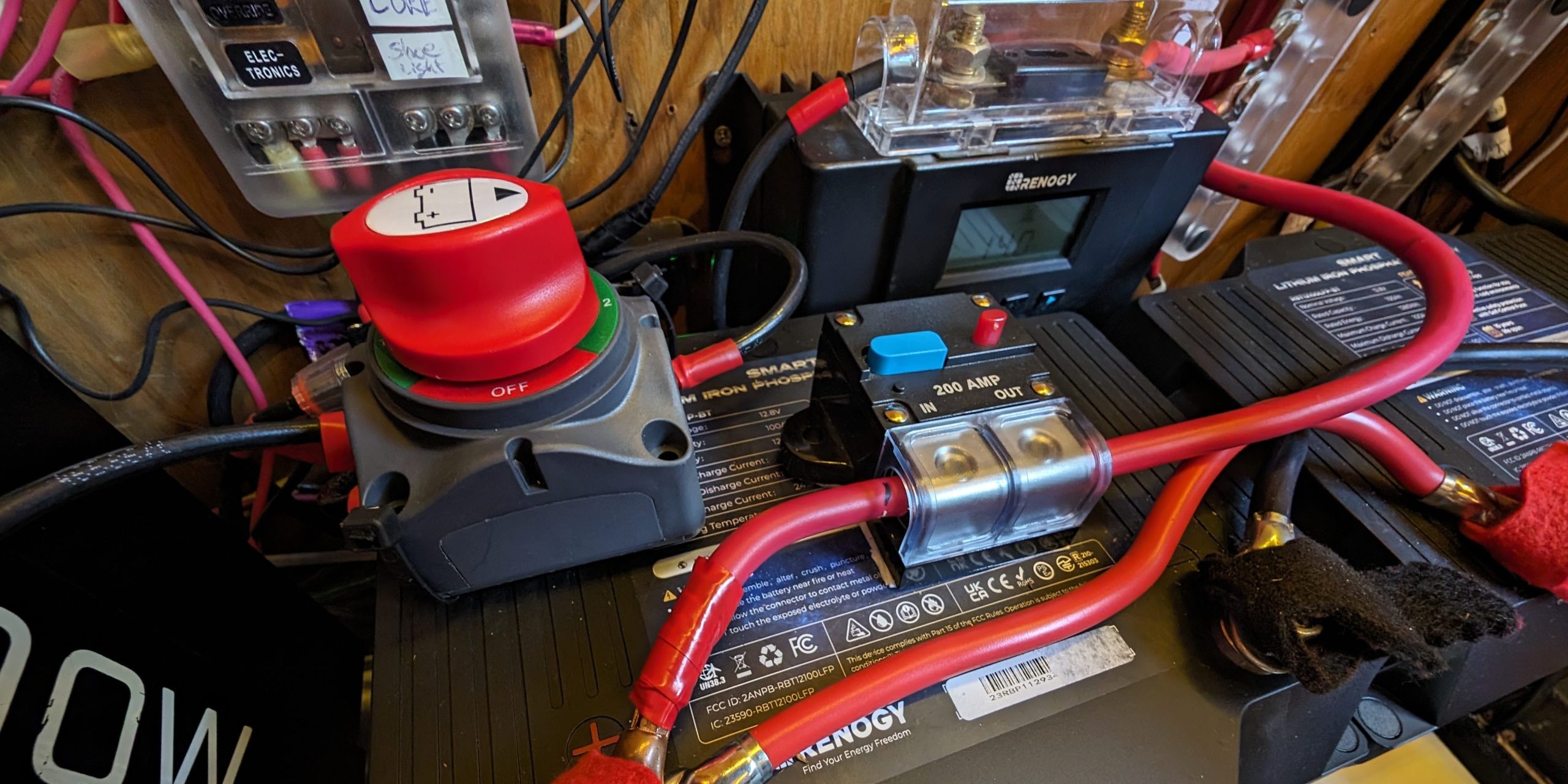
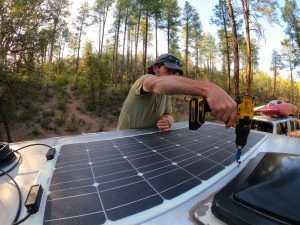
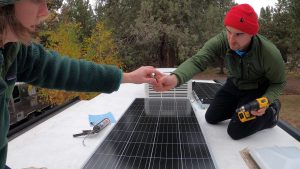
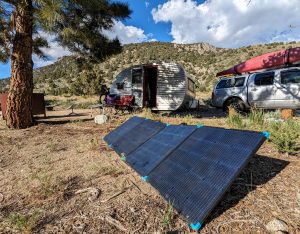
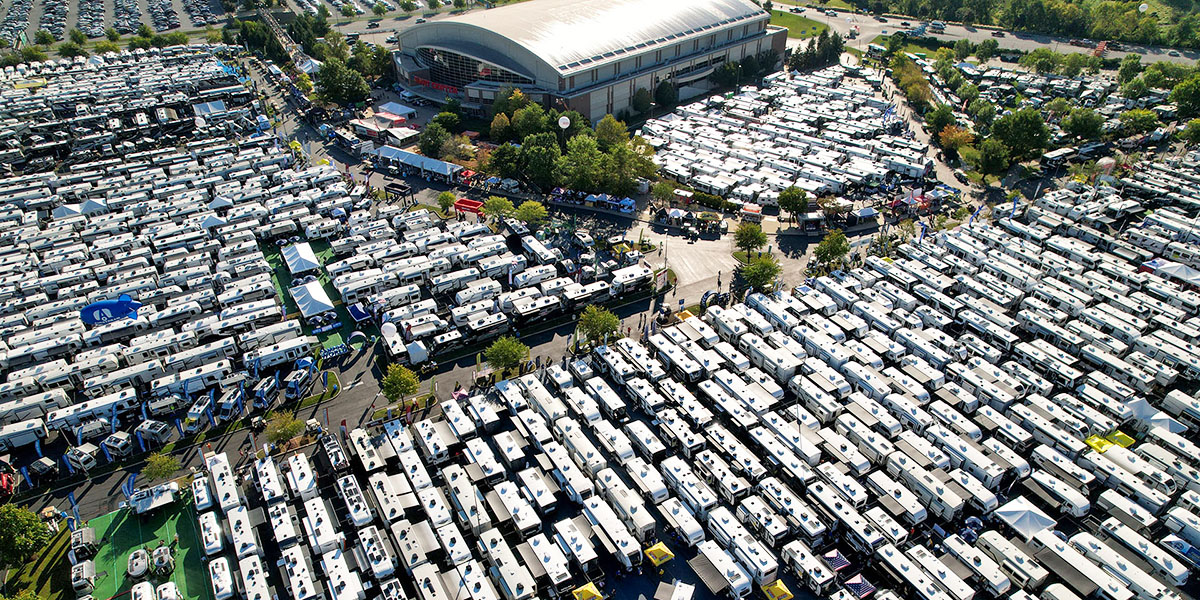
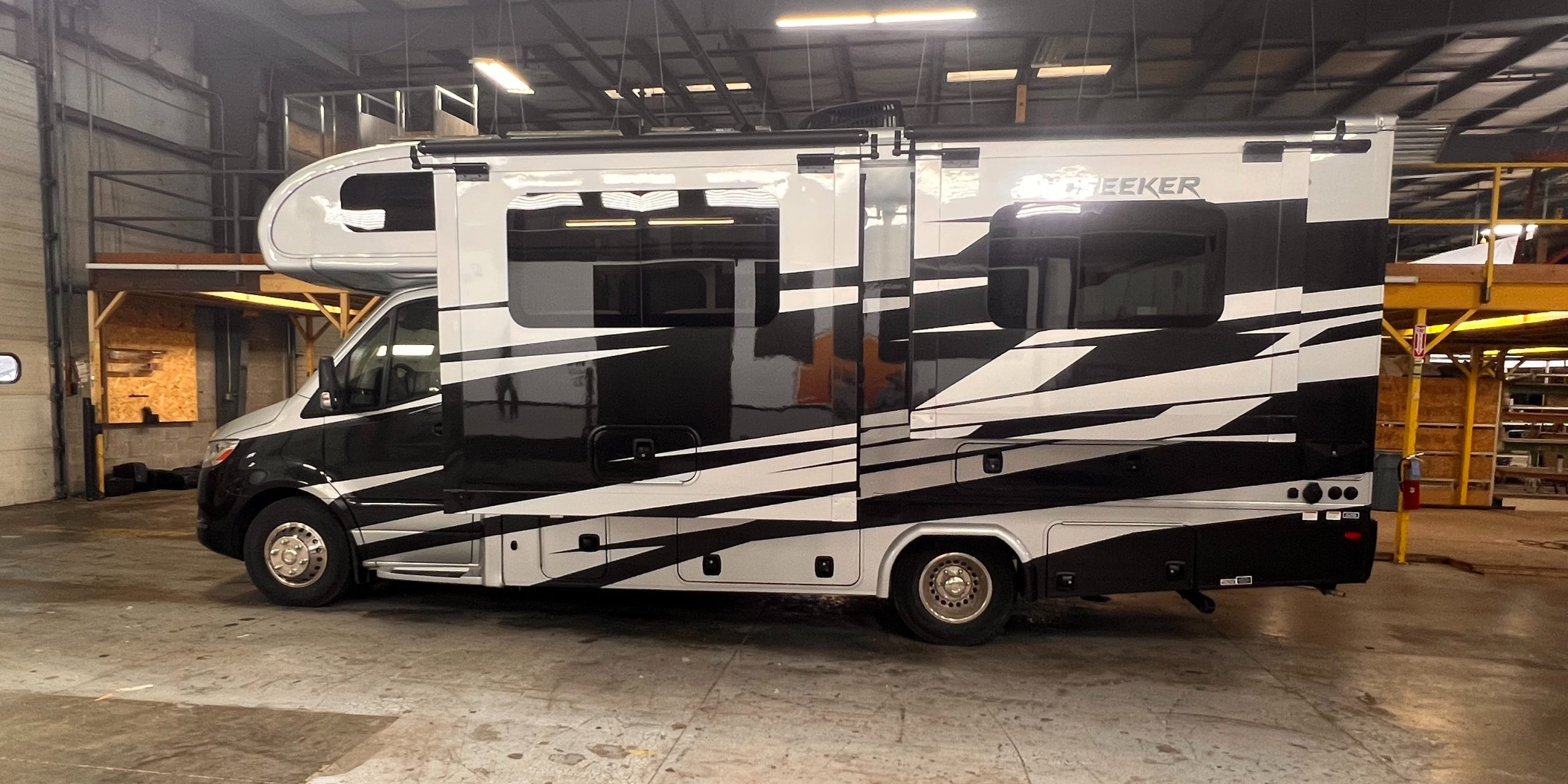
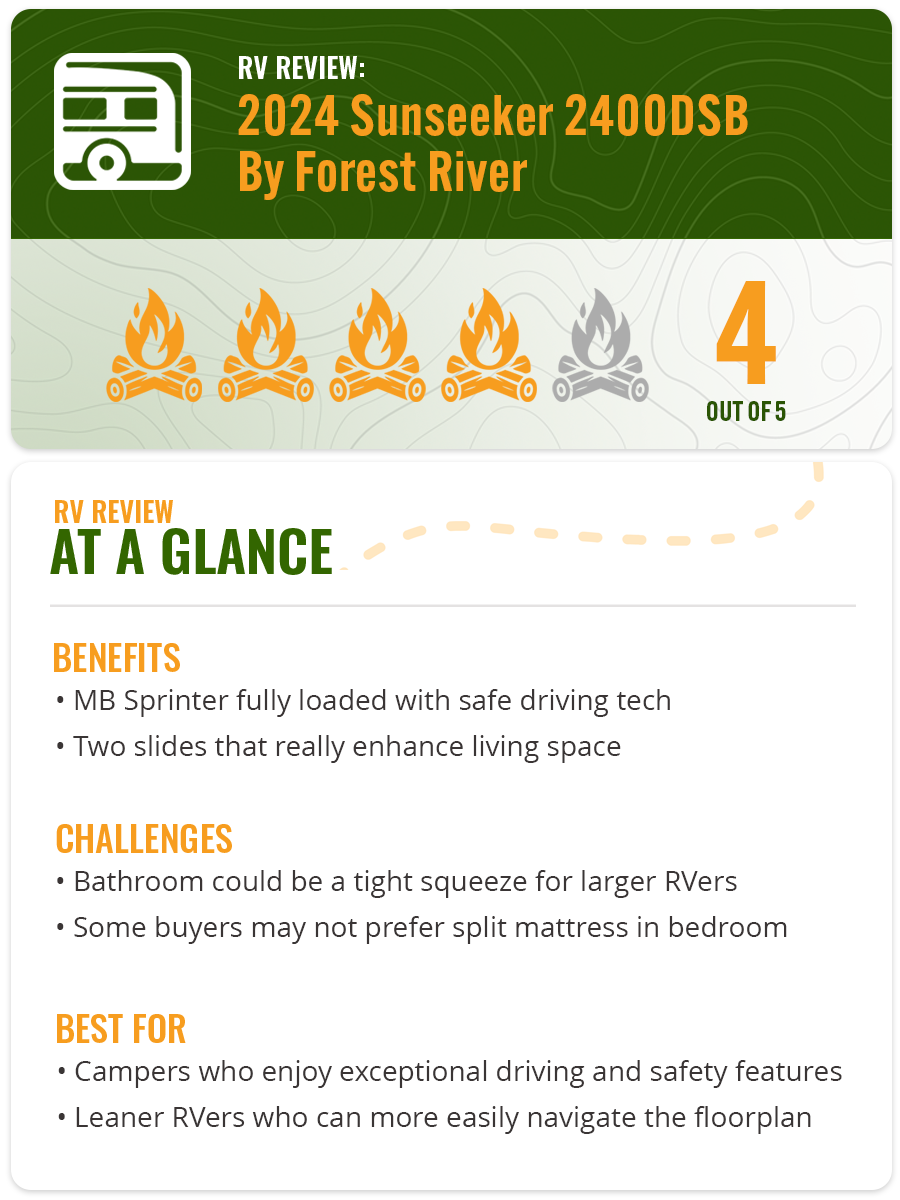 I gave the 2024 Forest River Sunseeker 2400DSB four out of five stars. This is a nicely finished RV, but the access to the bathroom is a bit tight with the slide-out (and almost impossible with the bed slide in). There is also a low-budget bathroom fan in what is otherwise a premium-feeling RV. You will also want to be careful loading this with 971 pounds of cargo carrying capacity. This might sound like a lot, but a full tank of water takes over 400 pounds from this equation.
I gave the 2024 Forest River Sunseeker 2400DSB four out of five stars. This is a nicely finished RV, but the access to the bathroom is a bit tight with the slide-out (and almost impossible with the bed slide in). There is also a low-budget bathroom fan in what is otherwise a premium-feeling RV. You will also want to be careful loading this with 971 pounds of cargo carrying capacity. This might sound like a lot, but a full tank of water takes over 400 pounds from this equation. 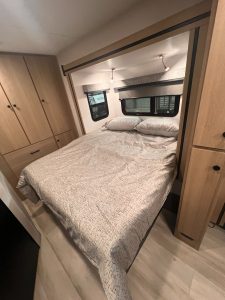
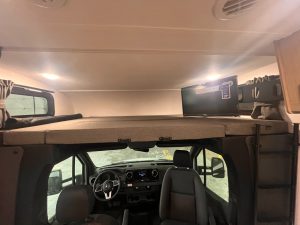
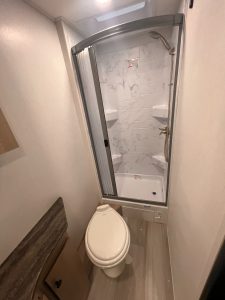
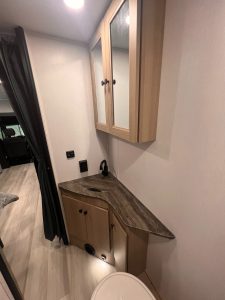
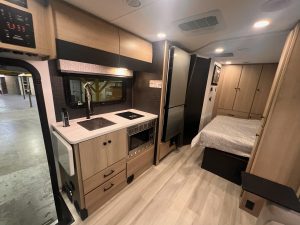
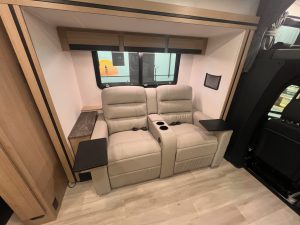
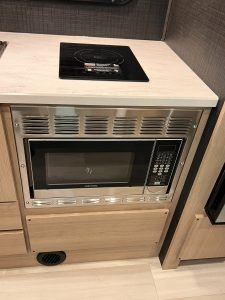
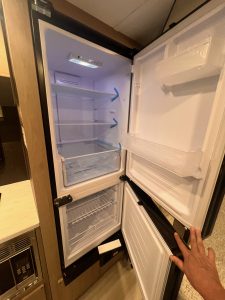
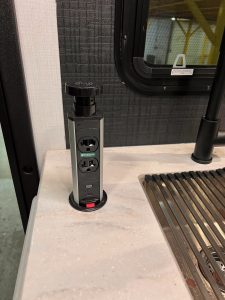
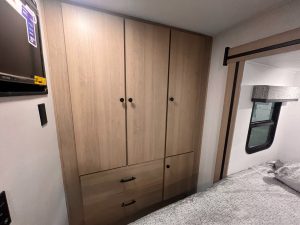
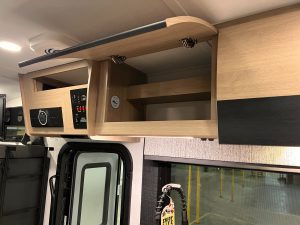
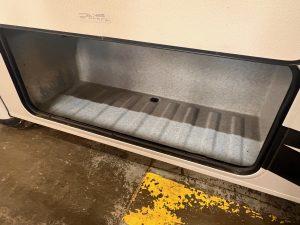
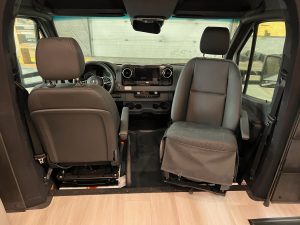
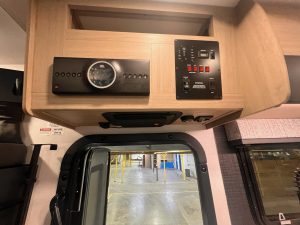
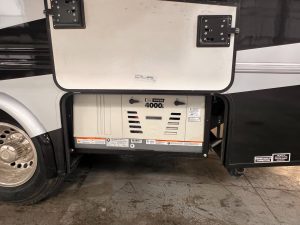
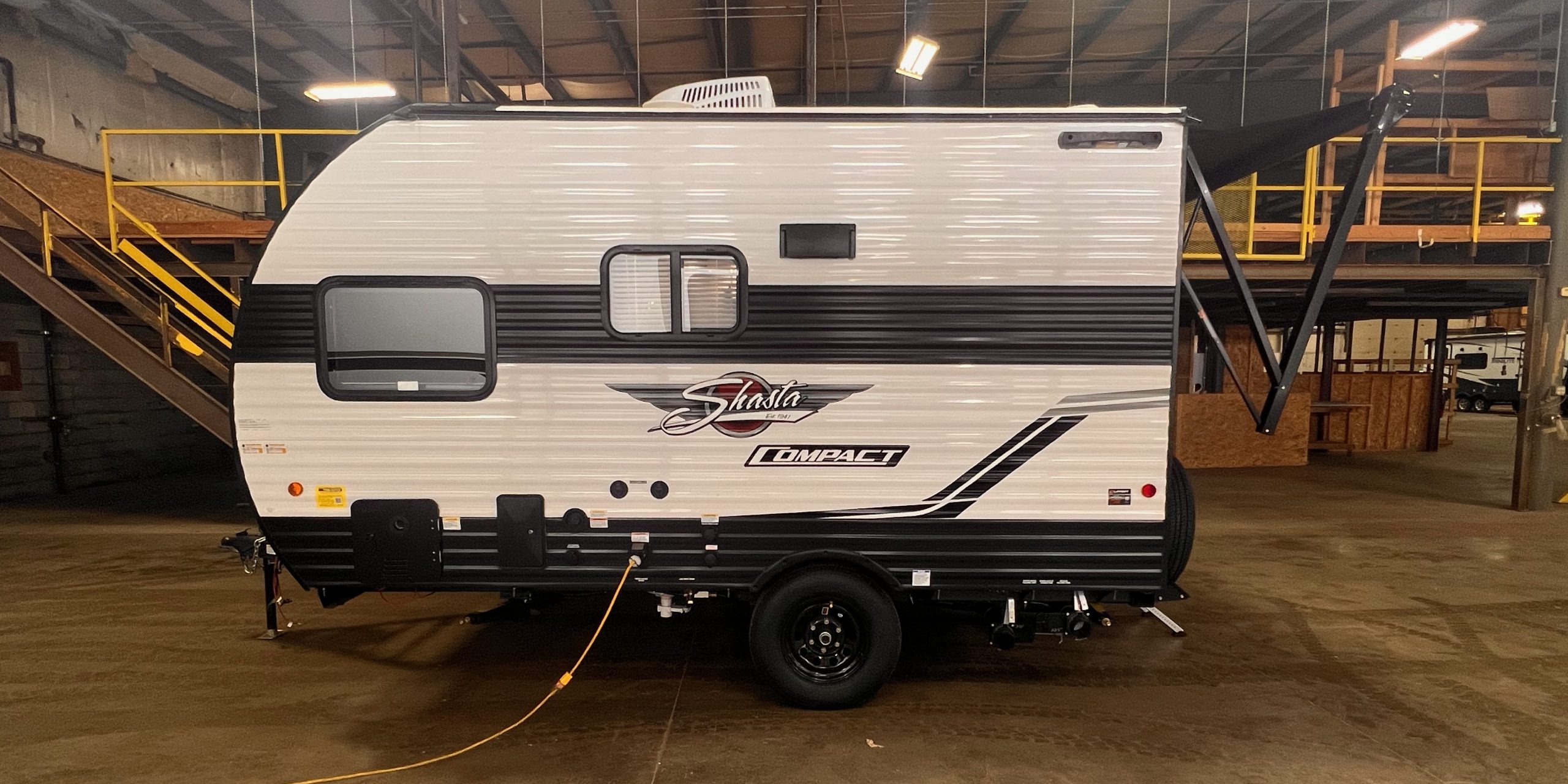
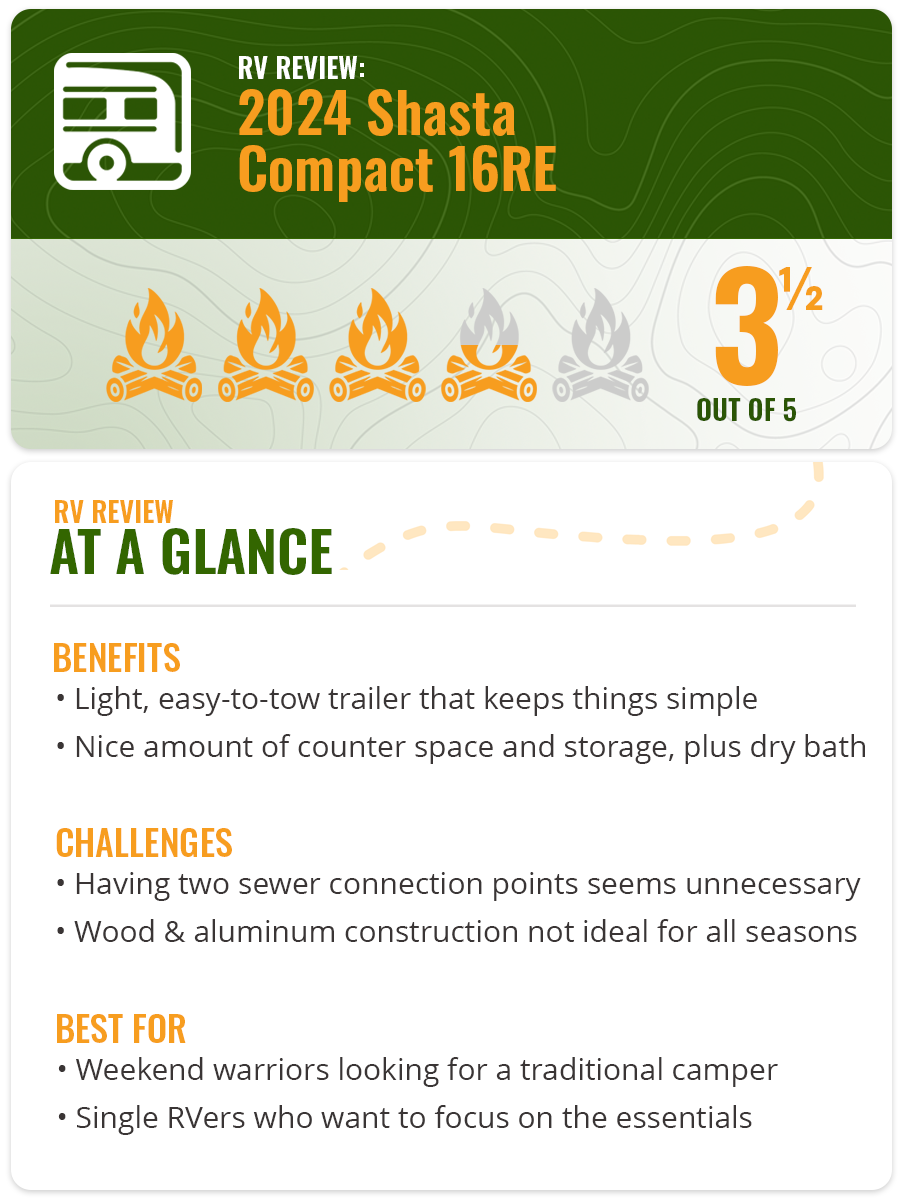 I gave the Shasta Compact 16RE three and a half out of five stars. This is a great little trailer for some campers, but it does possess a few oddities. The two sewer connections seem silly in a trailer this small. I’m also not a big fan of the latch in the 12-volt fridge on this unit. Other than that, for a camper of this size, this is a nifty little package.
I gave the Shasta Compact 16RE three and a half out of five stars. This is a great little trailer for some campers, but it does possess a few oddities. The two sewer connections seem silly in a trailer this small. I’m also not a big fan of the latch in the 12-volt fridge on this unit. Other than that, for a camper of this size, this is a nifty little package.